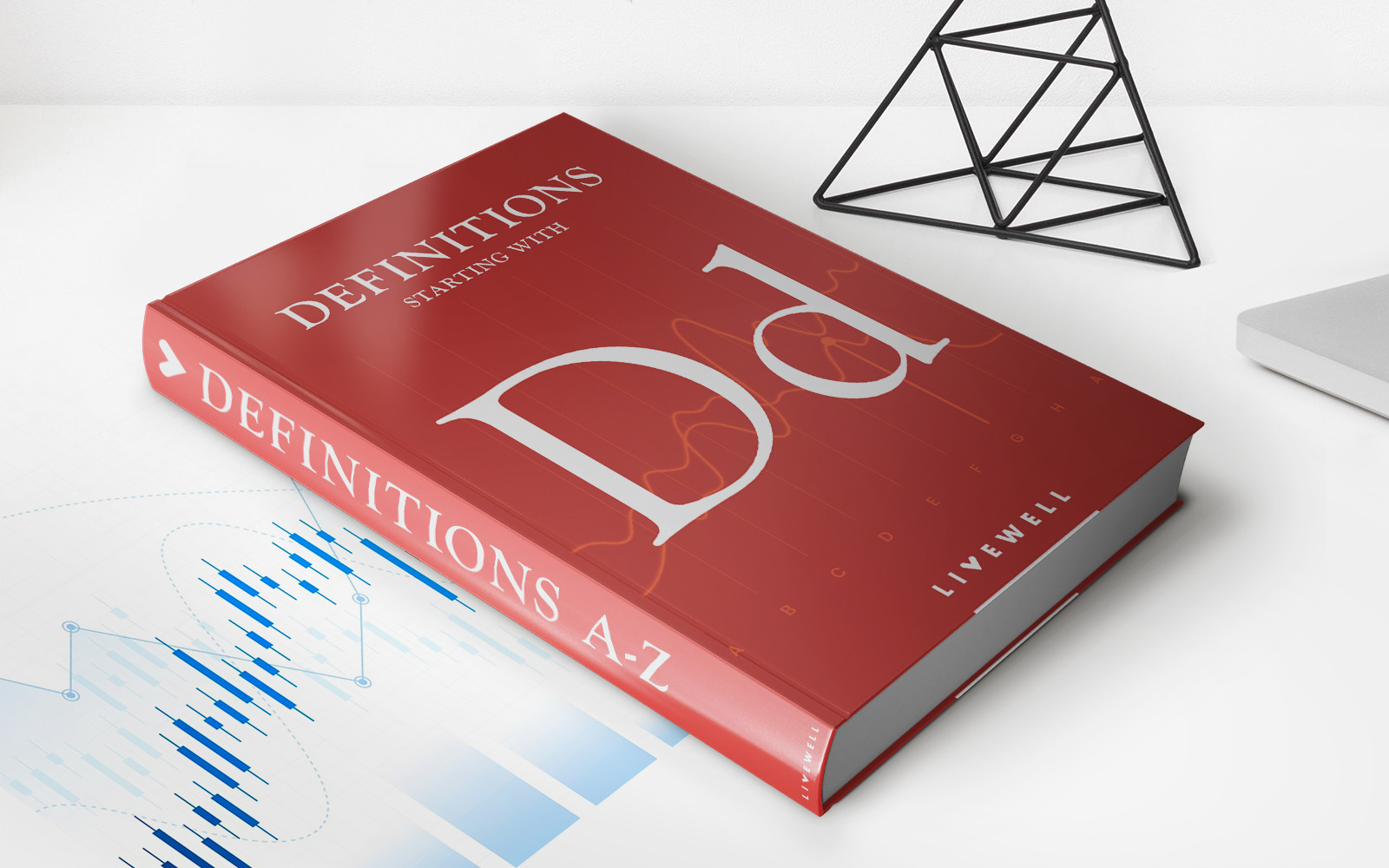Home>Finance>How To Do A DCF With A Changing Capital Structure


Finance
How To Do A DCF With A Changing Capital Structure
Modified: December 30, 2023
Learn how to perform a dynamic discounted cash flow (DCF) analysis in finance, accounting for changes in capital structure. Master this essential financial valuation technique.
(Many of the links in this article redirect to a specific reviewed product. Your purchase of these products through affiliate links helps to generate commission for LiveWell, at no extra cost. Learn more)
Table of Contents
Introduction
Welcome to our comprehensive guide on how to do a Discounted Cash Flow (DCF) analysis with a changing capital structure. When it comes to evaluating the financial viability of a company, DCF is a powerful tool that helps investors and analysts determine the present value of an entity’s future cash flows.
Traditionally, DCF analysis assumes a static capital structure, where a company’s debt and equity proportions remain constant over time. However, in real-world scenarios, a company’s capital structure can evolve due to various factors such as debt repayment, new debt issuance, equity issuances, or share buybacks. It is important to consider these changes when conducting a DCF analysis to ensure accurate and reliable valuation.
By incorporating a changing capital structure into your DCF analysis, you can gain a more accurate understanding of a company’s value and make informed investment decisions. In this guide, we will explore the importance of capital structure in DCF analysis, the factors that influence capital structure, and provide a step-by-step guide on how to incorporate a changing capital structure into your DCF analysis.
Whether you’re a financial analyst, investor, or simply interested in understanding the intricacies of DCF analysis, this guide is designed to help you navigate the complexities of evaluating a company’s future cash flows in a dynamic financial environment.
Understanding Discounted Cash Flow (DCF)
Before delving into the specifics of incorporating a changing capital structure into DCF analysis, it’s important to have a solid understanding of the foundational concept of DCF.
DCF analysis is a valuation method used to determine the intrinsic value of an investment or a company. It employs the principle that the value of money today is worth more than the same amount in the future due to factors such as inflation and the opportunity cost of capital.
The core idea behind DCF analysis is to estimate the future cash flows generated by an investment or company and then discount those cash flows back to their present value by using an appropriate discount rate. The discount rate reflects the risk associated with the investment and represents the desired rate of return for the investor.
The formula for calculating the present value of cash flows in DCF analysis is as follows:
PV = CF1 / (1 + r)1 + CF2 / (1 + r)2 + … + CFn / (1 + r)n
Where:
- PV = Present Value
- CF = Cash Flow in a specific period
- r = Discount Rate
- n = Number of periods
By discounting the future cash flows, DCF analysis provides a snapshot of the investment’s or company’s value in today’s dollars. If the calculated present value exceeds the current market price, it may indicate that the investment is undervalued, while a present value lower than the market price may suggest the investment is overvalued.
DCF analysis is particularly useful in assessing the value of long-term investments or evaluating the worthiness of acquiring or investing in a company. It enables investors to make more informed decisions based on the estimated intrinsic value of the investment, rather than relying solely on market prices or historical performance.
Now that you have a solid understanding of DCF analysis, let’s explore why capital structure plays a crucial role in this valuation method.
Importance of Capital Structure in DCF Analysis
When conducting a DCF analysis, the capital structure of a company plays a vital role in determining its value. Capital structure refers to the combination of debt and equity a company uses to finance its operations and investments.
Here are the key reasons why capital structure is important in DCF analysis:
- Cost of Capital: Capital structure impacts a company’s cost of capital, which is the required rate of return that investors demand in exchange for investing in the company. The cost of debt and equity can vary significantly, and the mix of these sources of capital determines the overall cost of capital. Incorporating the appropriate cost of capital in the discount rate used in the DCF analysis ensures the accuracy of the valuation.
- Risk Assessment: The capital structure of a company reflects its financial risk. Companies with higher levels of debt typically have higher financial risk due to higher interest payments and potential difficulties in meeting debt obligations. By considering the capital structure, the DCF analysis captures the risk associated with a company’s financial obligations and provides a more realistic assessment of its value.
- Tax Implications: Debt financing offers tax advantages as interest payments are tax-deductible. This can result in lower taxable income and a reduced overall cost of capital. By incorporating the tax benefits of debt financing into the DCF analysis, the valuation reflects the tax shield and its impact on the company’s value.
- Flexibility and Growth Opportunities: Capital structure decisions can impact a company’s ability to pursue growth opportunities or undertake strategic initiatives. Companies with significant debt obligations may have limited financial flexibility and higher interest expenses, which can restrict their ability to invest in future projects. By recognizing the dynamics of capital structure, the DCF analysis factors in the company’s growth potential and the impact on its valuation.
To accurately assess the value of a company through a DCF analysis, it is crucial to incorporate the appropriate capital structure information. Failing to consider the changing capital structure can lead to an inaccurate valuation and potentially misguiding investment decisions.
Next, let’s explore the factors that influence a company’s capital structure and how they should be accounted for in the DCF analysis.
Factors Influencing Capital Structure
Several factors influence a company’s capital structure, and understanding these factors is crucial when incorporating a changing capital structure into DCF analysis. Let’s explore the key factors:
- Business Risk: The nature of a company’s industry and its inherent business risks can influence its capital structure decisions. Companies operating in stable industries with predictable cash flows may opt for higher levels of debt to take advantage of the tax benefits and lower their overall cost of capital. On the other hand, companies operating in highly volatile or cyclical industries may prefer a lower level of debt to mitigate financial risks.
- Financial Flexibility: A company’s financial flexibility, including its ability to generate stable cash flows and access capital markets, plays a role in determining its capital structure. Companies with strong cash flows and access to capital may be more inclined to take on additional debt to fund growth opportunities, acquisitions, or other strategic initiatives.
- Cost of Capital: The cost of debt and equity financing directly impacts a company’s capital structure decisions. If debt financing is more affordable or has a lower cost compared to equity financing, the company may have a higher proportion of debt in its capital structure. Conversely, if equity financing is cheaper, a company may choose to rely more on equity issuance.
- Tax Considerations: The tax implications of different capital structure choices can significantly influence company decisions. Interest payments on debt are often tax-deductible, which provides a tax shield and reduces the overall cost of debt financing. This tax advantage may incentivize companies to increase their debt levels in their capital structure.
- Investor Preferences: The preferences and demands of investors in the capital markets can impact a company’s capital structure. Some investors may prefer higher levels of debt because of the potential for higher returns, while others may prefer lower levels of debt and a more conservative capital structure. Companies need to consider the expectations and preferences of their investors when making capital structure decisions.
It’s important to note that these factors interact with each other and can vary depending on the company’s specific circumstances, industry, and market conditions. By analyzing these factors and keeping track of any changes in the company’s capital structure, you can ensure that your DCF analysis accurately reflects the evolving financial dynamics of the business.
Now that we understand the factors that influence capital structure, let’s move on to the step-by-step guide on how to incorporate a changing capital structure into your DCF analysis.
Step-by-Step Guide to Doing a DCF with a Changing Capital Structure
When conducting a DCF analysis with a changing capital structure, it’s essential to follow a systematic approach to ensure accuracy and reliability. Consider the following step-by-step guide:
- Understand the Current Capital Structure: Begin by gathering information on the company’s current capital structure, including its debt-to-equity ratio, the amount of outstanding debt, and any specific details related to the company’s liabilities and obligations.
- Identify the Factors Influencing Capital Structure: Consider the factors discussed earlier, such as business risk, financial flexibility, cost of capital, tax considerations, and investor preferences. Evaluate how these factors may impact the company’s capital structure in the future.
- Forecast Future Capital Structure: Based on your analysis of the influencing factors, make reasonable assumptions about how the company’s capital structure may change over the forecast period. Consider factors like debt repayments, potential debt issuances, equity offerings, and share buybacks.
- Adjust Cash Flows and Discount Rate: Incorporate the projected changes in the capital structure into your DCF analysis by adjusting the cash flows and discount rate accordingly. For example, if the company plans to issue additional debt, include the interest expense related to that debt in your cash flow projections.
- Calculate the Present Value: Use the adjusted cash flow projections and discount rate to calculate the present value of the future cash flows. Follow the standard DCF formula: PV = CF1 / (1 + r)1 + CF2 / (1 + r)2 + … + CFn / (1 + r)n
- Analyze the Valuation Results: Assess the results of the DCF analysis, taking into account the changing capital structure. Compare the present value of the projected cash flows to the current market price to determine the investment’s potential undervalued or overvalued status.
- Revisit and Update: As the company’s capital structure changes over time, revisit your DCF analysis periodically and update the assumptions and projections to reflect the most recent information. This ongoing evaluation will provide a more accurate and up-to-date valuation.
By following these steps, you can incorporate a changing capital structure into your DCF analysis. Remember to exercise judgment and use reasonable assumptions when forecasting future changes in the capital structure.
Now let’s wrap up this guide.
Conclusion
Incorporating a changing capital structure is a crucial aspect of conducting a rigorous and accurate Discounted Cash Flow (DCF) analysis. By taking into account the dynamic nature of a company’s financing decisions, you can enhance the reliability of the valuation and make more informed investment decisions.
Throughout this guide, we explored the fundamentals of DCF analysis and its importance in determining the intrinsic value of investments. We also discussed why capital structure plays a vital role in the DCF analysis process.
We identified key factors that influence a company’s capital structure, such as business risk, financial flexibility, cost of capital, tax considerations, and investor preferences. Understanding these factors helps us anticipate how a company’s capital structure may change over time.
By following a step-by-step guide, we outlined how to incorporate a changing capital structure into your DCF analysis. This includes understanding the current capital structure, identifying influencing factors, forecasting future changes, adjusting cash flows and discount rates, calculating the present value, and continuously revisiting and updating the analysis.
By integrating a changing capital structure into your DCF analysis, you can more accurately determine the intrinsic value of an investment, helping you assess potential undervalued or overvalued opportunities in the market.
Remember, conducting a DCF analysis with a changing capital structure requires careful consideration of various factors and making reasonable assumptions. It is essential to stay updated on changes in the company’s financial position and market conditions to ensure the accuracy and relevancy of your analysis.
We hope that this comprehensive guide has provided you with the necessary insights to effectively incorporate a changing capital structure into your DCF analysis. Armed with this knowledge, you can make more informed investment decisions and navigate the dynamic landscape of financial evaluation with confidence.














